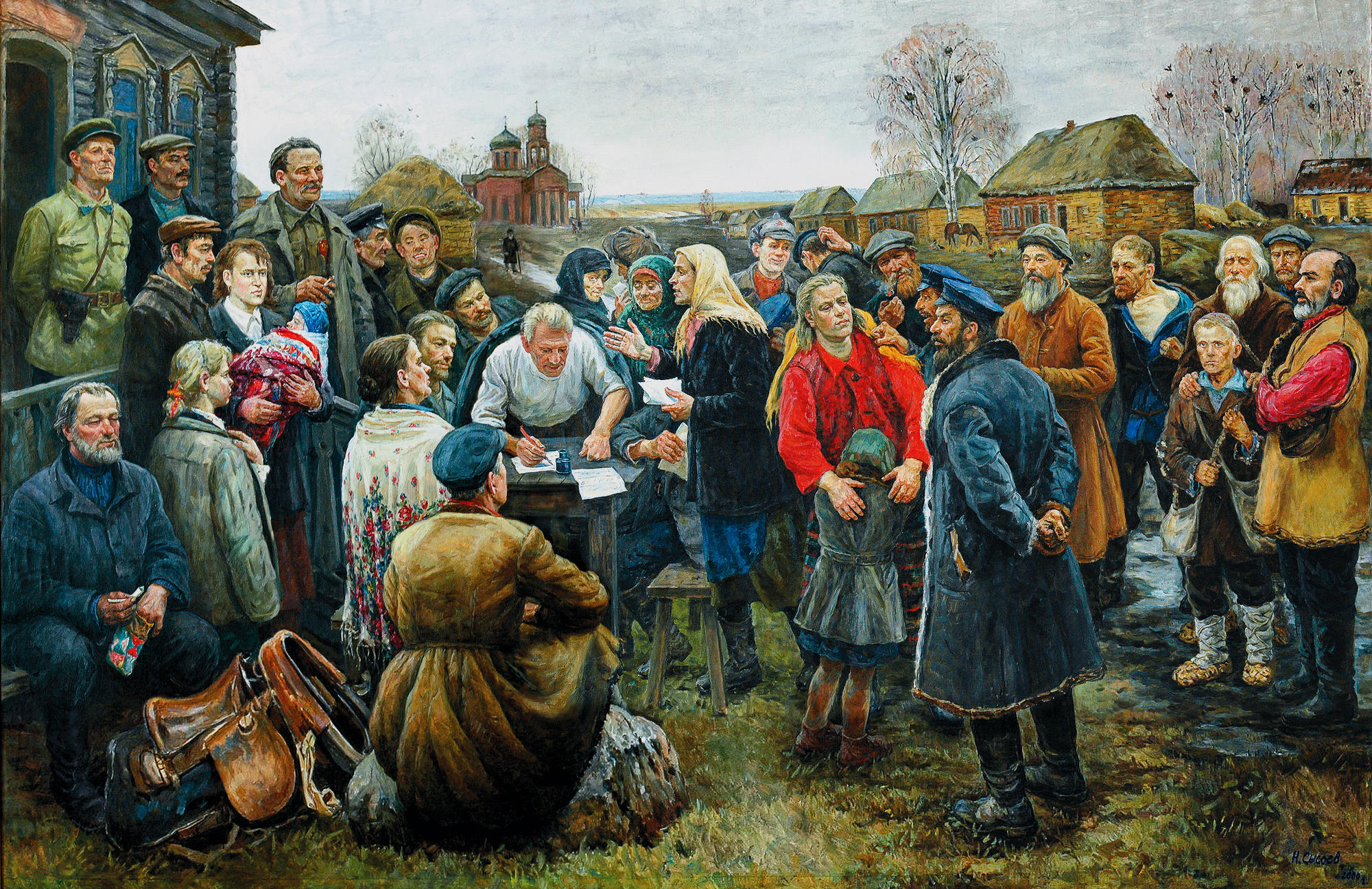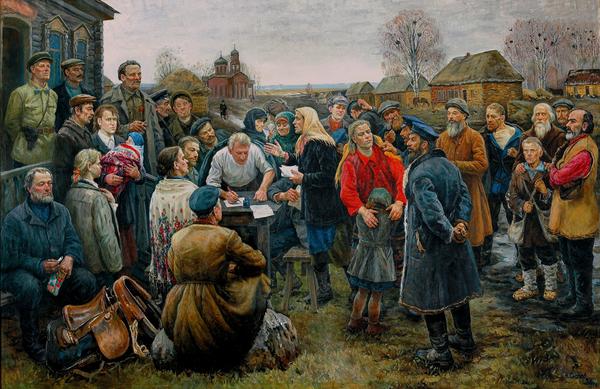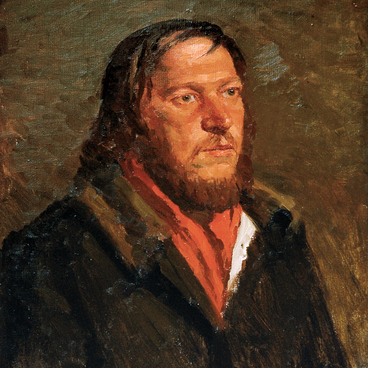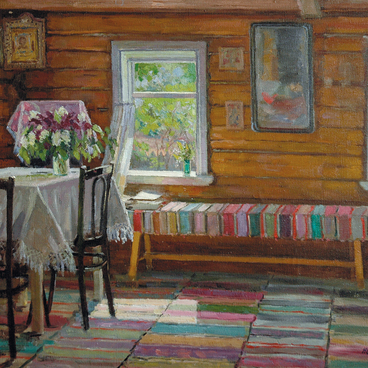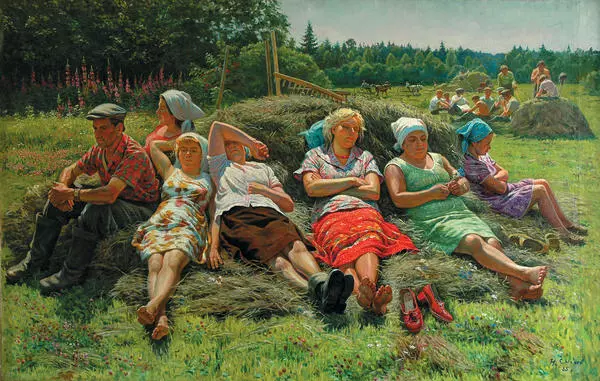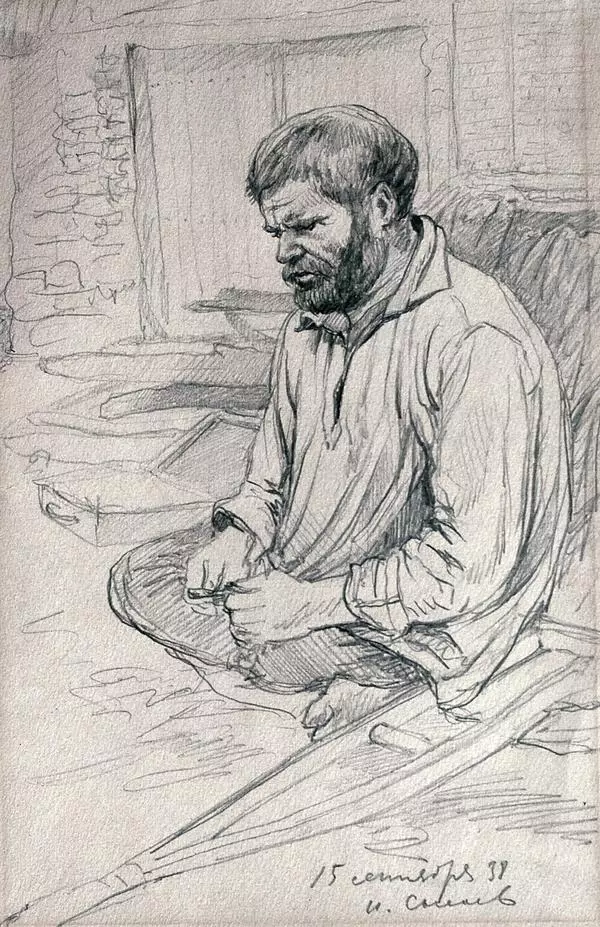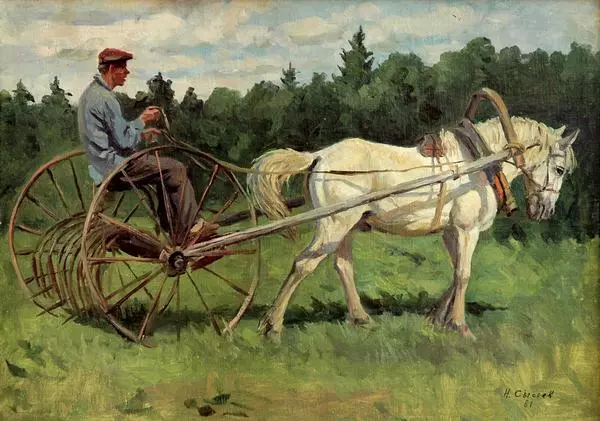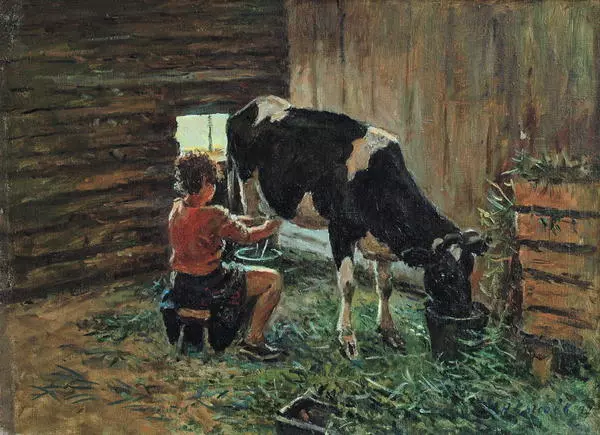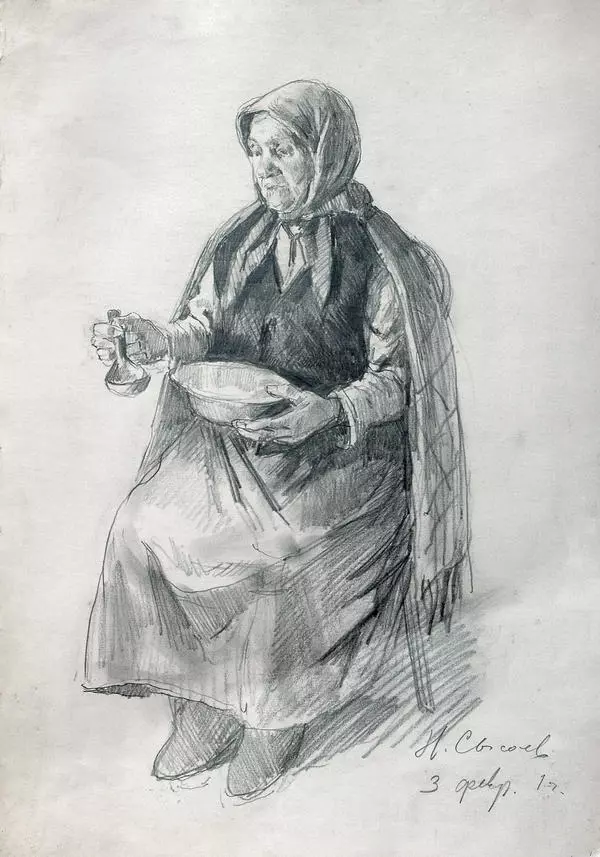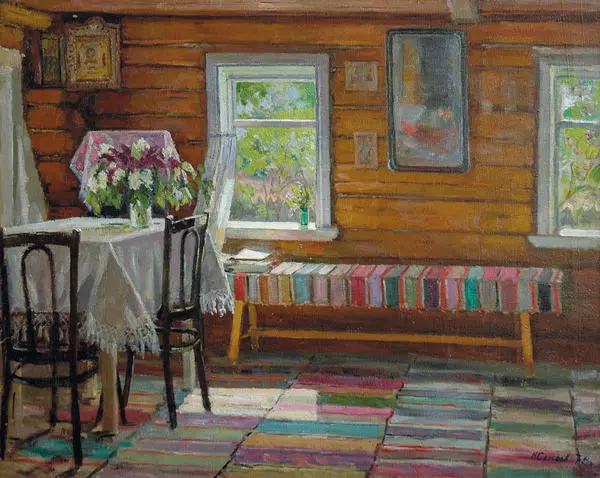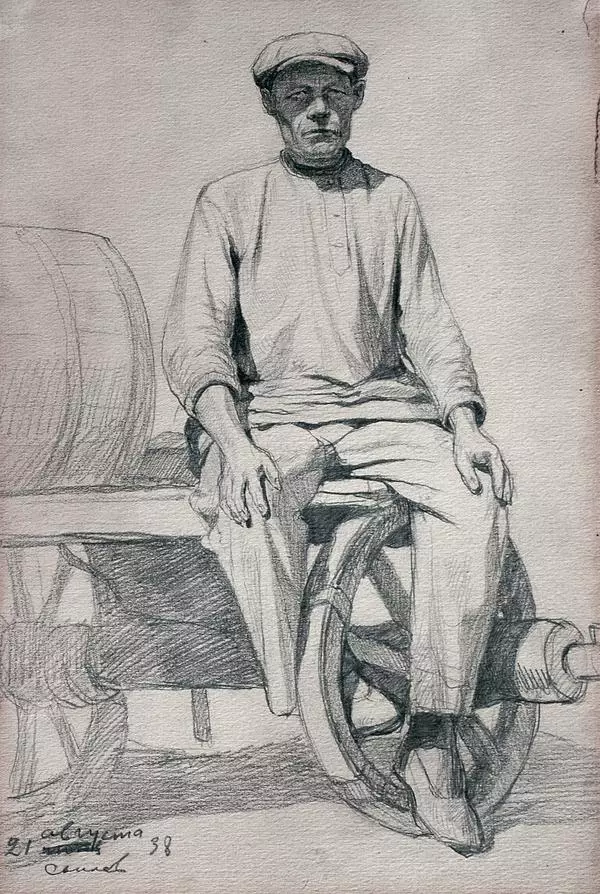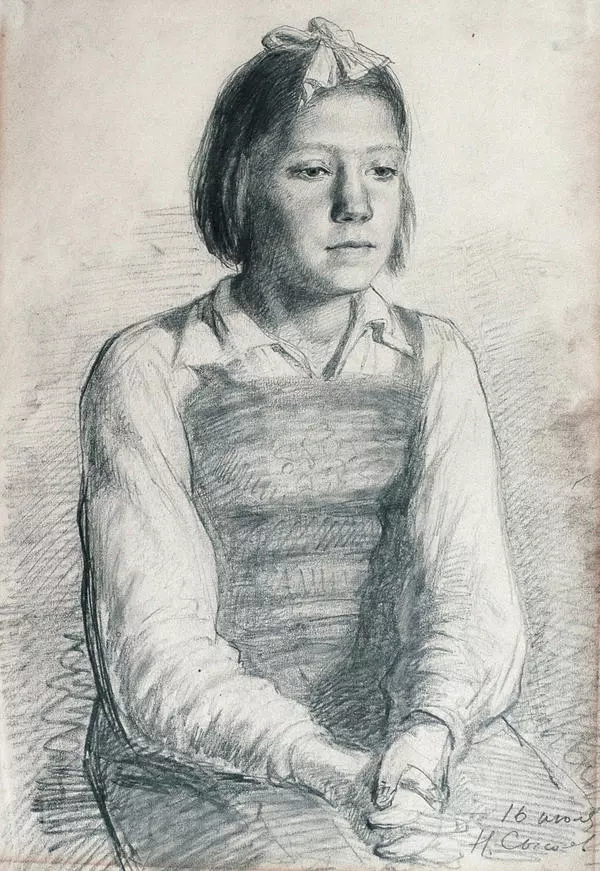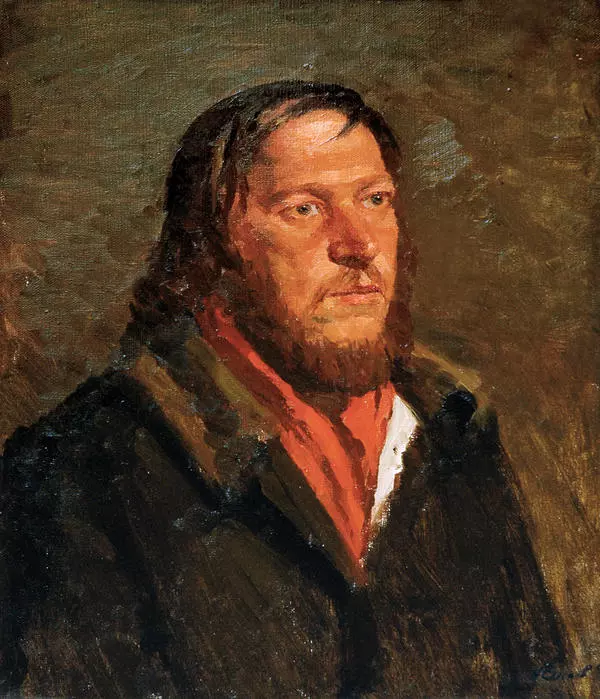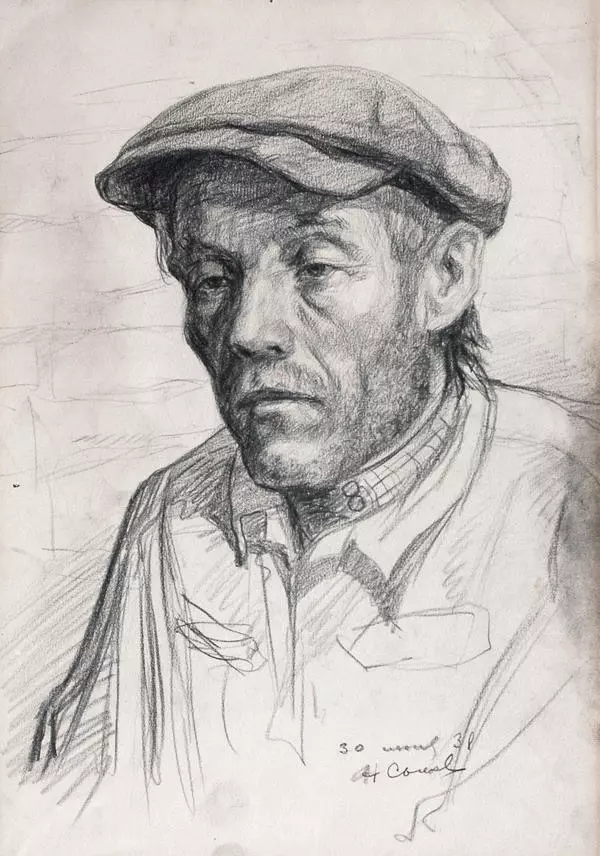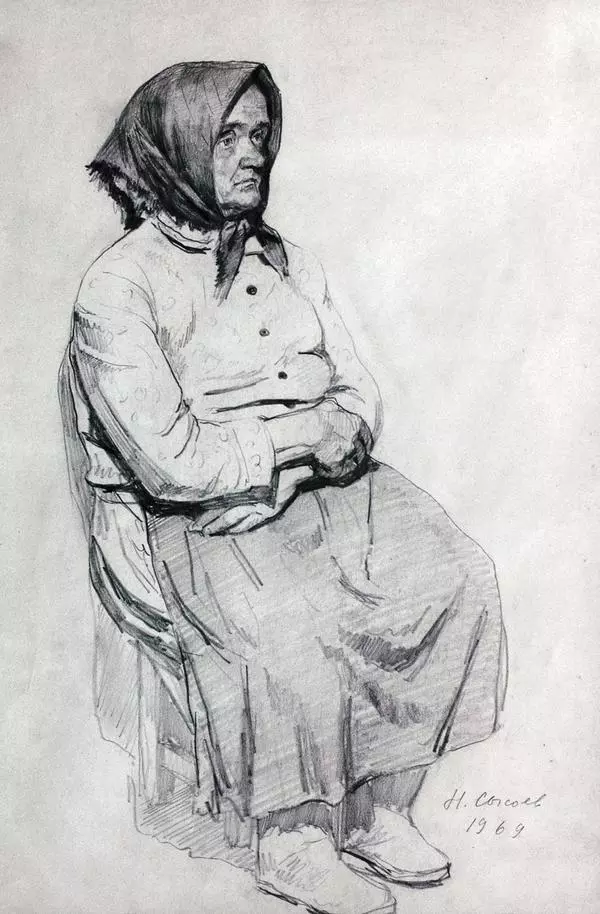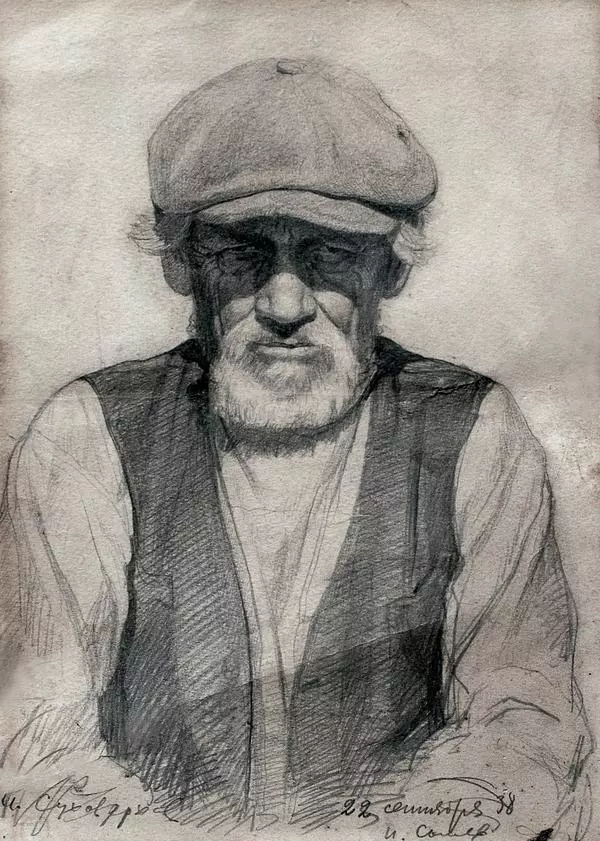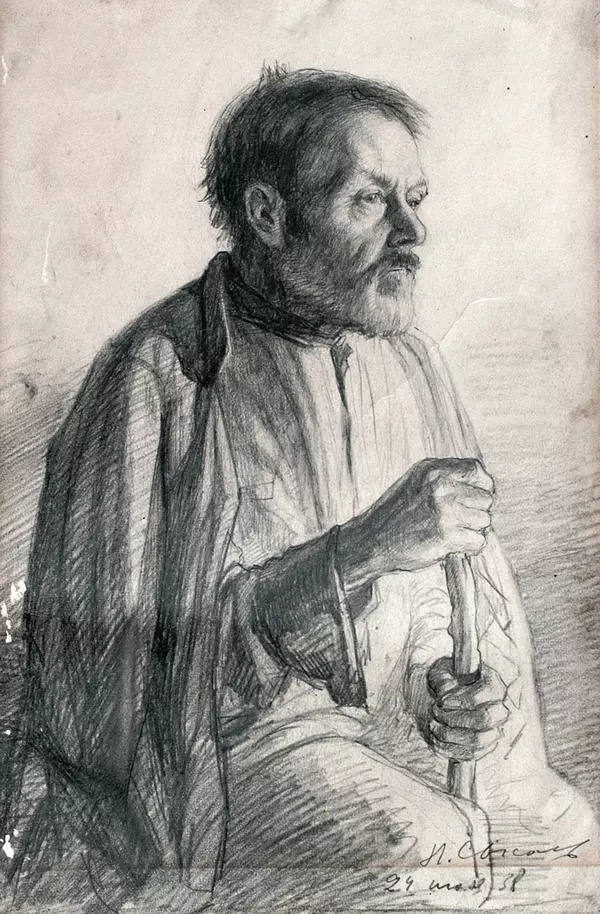The decision to collectivize was made at the 15th Congress of the All-Union Communist Party in 1927. Despite agriculture’s having been almost completely restored following the aftermath of the wars (World War I and the Civil War), the so-called grain procurement crisis hit the country in 1927. It was decided to abandon the NEP (new economic policy) and change course towards collectivization, which was carried out in 1928–1937. Collectivization presupposed the unification and transformation of small individual peasant farms into large public cooperative production (collective and state farms) under state control.
The year 1929 went down in the history of the Soviet Union as “the year of the great turn on all fronts of socialist construction.” Approximately a quarter of a million communists, Komsomol members, and non-partisan workers — the so-called twenty-five thousand — were sent from cities to villages to help collectivize. They exerted serious political pressure on the peasants to implement the plans aimed at unifying the farms.
Nikolai Sysoev dedicated his painting Collectivization to this historical period. The artist remembered the atmosphere that prevailed in his native village of Slanskoe when the collective farms were organized when he was 10. Sysoev met those involved in the collectivization again later when he was older. He remembered them as characters and subsequently employed them to bring the characters to life in his paintings. By the time Collectivization was created, its design and semantic plot had been fully developed. Sysoev began to collect studies for the picture before he had graduated from the art institute, in parallel with the studies he was making for his final project.
The painting depicts a landscape of early spring in the Lipetsk Region. Peasants have gathered at the village council. The man wearing a cap and standing on the left porch is the chairman of the village council, and to his right there is one of twenty-five thousand. It would appear that he has just reminded the audience of the advantages of collective farming and then urged the poor and middle peasants to sign up for the collective farm. There are rural activists seated at the table: they were the first to sign up for the collective farm. The right side of the picture shows prosperous peasants who are opposed to collectivization. They are led by a wealthy peasant (kulak) holding his arms behind his back.
It’s as if the artist has taken a snapshot directly from life. It would seem likely that he made use of his childhood memories along with his sketches when painting this work.
The first version of the painting Collectivization was painted in the summer of 1957. It is located in the Mordovian Erzia Museum of Visual Arts. The second version is in a private collection in Italy. In 2000, the artist painted another version for the art gallery in the settlement of Leo Tolstoy.
The year 1929 went down in the history of the Soviet Union as “the year of the great turn on all fronts of socialist construction.” Approximately a quarter of a million communists, Komsomol members, and non-partisan workers — the so-called twenty-five thousand — were sent from cities to villages to help collectivize. They exerted serious political pressure on the peasants to implement the plans aimed at unifying the farms.
Nikolai Sysoev dedicated his painting Collectivization to this historical period. The artist remembered the atmosphere that prevailed in his native village of Slanskoe when the collective farms were organized when he was 10. Sysoev met those involved in the collectivization again later when he was older. He remembered them as characters and subsequently employed them to bring the characters to life in his paintings. By the time Collectivization was created, its design and semantic plot had been fully developed. Sysoev began to collect studies for the picture before he had graduated from the art institute, in parallel with the studies he was making for his final project.
The painting depicts a landscape of early spring in the Lipetsk Region. Peasants have gathered at the village council. The man wearing a cap and standing on the left porch is the chairman of the village council, and to his right there is one of twenty-five thousand. It would appear that he has just reminded the audience of the advantages of collective farming and then urged the poor and middle peasants to sign up for the collective farm. There are rural activists seated at the table: they were the first to sign up for the collective farm. The right side of the picture shows prosperous peasants who are opposed to collectivization. They are led by a wealthy peasant (kulak) holding his arms behind his back.
It’s as if the artist has taken a snapshot directly from life. It would seem likely that he made use of his childhood memories along with his sketches when painting this work.
The first version of the painting Collectivization was painted in the summer of 1957. It is located in the Mordovian Erzia Museum of Visual Arts. The second version is in a private collection in Italy. In 2000, the artist painted another version for the art gallery in the settlement of Leo Tolstoy.
